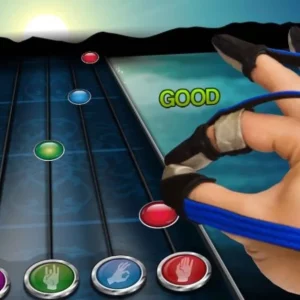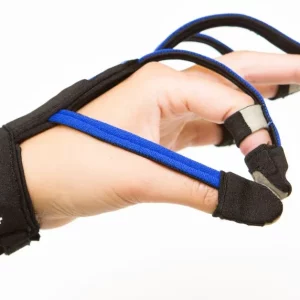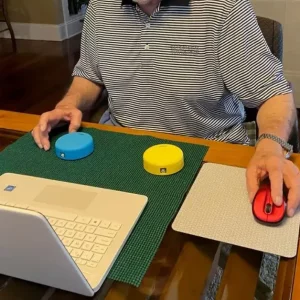More than half of all stroke survivors experience a post-stroke cognitive impairment. This may affect many functions, including memory, problem solving skills, and the ability to think clearly, among others. However, survivors can often improve their mental aptitude by practicing cognitive exercises for stroke patients.
In addition to outlining how cognitive functions may be affected by stroke, this article will provide a list of cognitive exercises for stroke patients to try at home. The positive changes that can occur in the brain as a result of practicing cognitive exercises for stroke patients will also be described.
Please use the links below to jump directly to any section of this article.
- How can a stroke affect cognition?
- Cognitive exercises for stroke patients
- Importance of cognitive exercises for recovery
How Can a Stroke Affect Cognition?
Stroke survivors may experience a wide array of secondary effects, resulting in changes to physical, emotional, behavioral and cognitive functions. The type and severity of these effects depends on which areas of the brain are affected. Many higher-level cognitive functions are primarily housed in the frontal lobe, thus individuals with damage to this area are likely to experience changes in their cognition.
Cognitive effects of stroke may include changes in:
- Memory
- Executive functions
- Problem solving
- Sequencing and organization
- Reasoning
- Attention
- Concentration
- Decision-making
Each of these skills is essential for day-to-day activities. Therefore, when one or more of these cognitive skills is affected by stroke, survivors may experience difficulties participating in their daily roles.
However, practicing cognitive exercises for stroke patients can allow individuals to partially or even fully recover these skills. While the list of cognitive exercises included in this article can help with recovery, individuals may also benefit from consulting with a speech-language pathologist to learn exercises tailored to their abilities and skill level.
Cognitive Training Exercises for Stroke Patients
Following a stroke, around 35% of survivors will experience mild cognitive impairments, while 16% experience more significant cognitive changes. The list of exercises compiled here ranges from simple cognitive activities to more advanced tasks to allow those with various cognitive skill levels to find an appropriately challenging activity.
Survivors, with the help of a family member or caregiver as needed, should find and practice the exercises that are difficult but manageable in order to promote improvements. Modifications to adjust the level of difficulty of certain exercises can also be used and are included below.
Individuals may be able to progress to more difficult exercises as their skills improve. Any activity that challenges cognitive skills can promote recovery, so feel free to deviate from this list as appropriate. The following are just some of many cognitive exercises for stroke patients to try at home:
1. Card Matching
Card matching is a visual memory game that can help with mental recall and visual scanning. Start by placing a deck of cards face down, spacing them out on a table. Then, uncover two cards at a time. Try to find matching pairs, never uncovering more than two cards at a time.
If this is too challenging, try using only 3 or 4 pairs of cards to begin with, adding more as appropriate. Practicing this activity with a loved one can make it more engaging, thus likely encouraging the survivor to practice more consistently.
2. Alphabetize Sentences
This cognitive exercise can help survivors to practice analytical reasoning. Start by choosing a sentence in a book or magazine and writing it down. Then, re-write the words in alphabetical order.
Choosing a longer sentence can make this exercise more difficult, while a shorter sentence would be better for those with more advanced cognitive impairments. Alternatively, if alphabetizing a whole sentence is too challenging, consider starting with organizing just the letters of one word to simplify the exercise.
3. Count Money
The activity of counting money can be used as a cognitive exercise for stroke patients to help with quantitative reasoning. Place a handful of various coins on a table. Gather 10-20 random coins and count the total value. Counting can help stimulate the brain and improve cognitive function.
Want 20 pages of stroke recovery tips in an illustrated PDF? Download our free ebook by clicking here (link opens a pop up for uninterrupted reading)
4. Brain Teasers
“Brain teasers” like Sudoku, word searches, and crossword puzzles are excellent cognitive exercises for stroke patients. In addition to improving analytical and quantitative reasoning, these activities can also improve concentration, attention, and memory. As cognitive skills improve over time, survivors may be able to advance the difficulty level of the puzzle that they choose.
5. Visuospatial Processing Games
Including activities that exercise perceptual skills, such as visuospatial processing, is important since cognition and perception are closely linked. This includes tasks that involve identifying visual differences and how they are positioned in a space.
The What’s the Difference app is a great example of a visuospatial processing activity. It challenges survivors to find one small difference between two otherwise identical pictures. This app, among other apps for stroke recovery, can be used as part of one’s cognitive therapy regimen.
6. Simon Memory Game
The classic game of Simon focuses on memory skills, giving it great potential to be used as a cognitive exercise for stroke patients. During the game, the device highlights a pattern of colors, and players must recall the pattern. Games begin with short sequence, and progress to longer sequences each turn. As their memory improves, individuals will be able to remember longer and longer sequences, a skill which can carry over to daily tasks such as remembering a grocery list.
7. Board Games
Classic board games and card games are great cognitive exercises for stroke patients. To stimulate the cognitive skills of deductive reasoning, divided attention and organization, consider trying Checkers, Connect Four, Rumikub, Mahjong, Rush Hour, Set, Blink, Spot It, or Qwirkle. Online options, such the free games found at Games for the Brain, can also help to promote cognitive recovery.
Even though games may seem like more fun than exercise, they can be a great way to consistently practice cognitive skills. However, ensure that the games are not too simple, but provide an appropriate challenge for the survivor.
8. Cooking
Cooking while following a recipe can improve numerous cognitive skills, including sequencing, memory, and problem solving skills. However, survivors whose cognition has been affected by stroke should initially be supervised during cooking tasks or use recipes that do not involve the oven, stove or microwave to ensure their safety. Survivors looking for a challenge could try a new recipe, or one involving multiple parts (such as making a salad with chicken on top).
9. Cognitive Therapy Apps
Cognitive therapy apps can be excellent tools for stroke survivors to use to stimulate recovery. For example, the CT Speech & Cognitive Therapy App includes cognitive exercises specifically chosen by Speech-Language Pathologists to promote improvements.
Cognitive therapy app exercises include those that can challenge memory, visuospatial processing, problem solving, and reasoning, among other skills. Furthermore, many apps can optimize the difficulty level of exercises, providing a just-right challenge to best promote recovery.
Want to learn more about the CT Speech and Cognitive Therapy App? Get Started Here.
(Link opens a pop-up for uninterrupted reading.)
10. Mindfulness
Practicing mindfulness can help stroke survivors improve cognitive functions as well as reduce stress and anxiety. Specifically, mindfulness can improve the cognitive skills of attention, mental flexibility, and information processing.
While there are many apps and YouTube resources that can be used for a guided mindfulness exercise, survivors can practice mindfulness simply by living in the present moment. Spending just a few minutes each day paying attention to one’s breath, body, and current feelings while noticing the sights, sounds and smells in the surroundings can be a great way to promote relaxation as well as mental clarity.
As the list above demonstrates, there are many different types of cognitive exercises for stroke patients. Practicing these exercises at home can help survivors continue improving their cognitive skills, even outside of their therapy sessions.
Importance of Practicing Cognitive Exercises for Recovery
Cognitive exercises can help sharpen one’s cognition, but need to be practiced consistently to be most effective. While practicing cognitive skills during therapy is a great place to start, continuing to practice these skills at home can promote lasting improvements. Consistency is key for neuroplasticity, which is how the brain heals after stroke.
Although cognitive functions may be impaired due to the damage from stroke, neuroplasticity allows the brain to heal and recuperate. Specifically, it allows the brain to form new neural networks and rewire itself to heal from the damage.
The brain develops and strengthens neural pathways based on the patterns that are repetitively practiced. This is because repetitive stimulation helps rewire the brain to improve affected skills. Therefore, practicing cognitive exercises frequently can boost the recovery of cognitive functions.
For individualized help with cognitive rehabilitation after a stroke, it is a good idea to work with a speech-language pathologist. These experts can help diagnose problem areas and create a personalized treatment plan to optimize strengths while targeting areas of need. However, continuing to practice cognitive training exercises independently between sessions can promote the consistency needed to rewire the brain and recover cognitive skills needed for daily life.
Understanding Cognitive Exercises for Stroke Patients
Cognition is often impacted following a stroke. Practicing cognitive exercises for stroke patients can help survivors boost their cognitive skills, allowing them to engage in daily life more easily.
There are numerous types of cognitive exercises, but the most effective exercises are those that are challenging to survivors and are practiced on a regular basis. This is because repetitive practice promotes neuroplasticity, the key to recovery after stroke.
In addition to regularly practicing the above cognitive exercises for stroke patients, survivors should consider pursuing therapy with a speech-language pathologist to create a custom regimen that targets problem areas. Consistently practicing cognitive exercises can maximize survivors’ potential for recovering cognitive functions after stroke.
Did you enjoy this article? Learn more games to improve memory after stroke.










